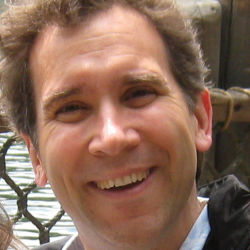
The second invited talk opened the second day of Informatics Education Europe IV in Freiburg, Germany. Hans-Urlich Heiss of EQANIE and Technical University Berlin spoke on the issues of accreditation of informatics degrees in Europe. He said that one of the goals of the Bologna Accord is to enable mobility, both to enable courses and degrees to be carried between institutions and to smooth connections between early and later degrees. Mobility is enabled by trust, which is enabled by quality assurance, which is enabled by accreditation. EQANIE is accrediting the accrediting organizations, to establish standards for computing education across Europe.
The next talks were on increasing enrollment. Jonathan Black presented CS4Fun (http://www.cs4fn.org/) and its evaluation. The philosophy of the project is "If you excite interest, recruitment takes care of itself." Jonathan did a magic trick with cards, that could be explained in terms of invariants and modulo arithmetic. Rainer Herpers of Bonn-Rhein-Sieg University presented a study of how self-perception influenced choice of study. They are drawing on Carol Dweck's work on self theories of intelligence, to explain how students self-perception is influencing success in informatics classes. Rainer has been attempting to change his classes to make them more gender diverse.
Three papers looked at efforts in high schools and use of distance technologies.
- Luisa Mich of the University of Trento presented an analysis of what high schools in Italy offer what kinds of ICT certification, and why students take them. Their study involved over 100,000 students. 65% of the technical and professional high schools they studied and 45% of "lyceums" (licei) build certifications into their curricula, where the most common is the European Computer Driving License (ECDL). In discussion, Andrew McGettrick pointed out that in the UK 70% of all students completing the ECDL are female.
- Barbara Demo of the University of Turin presnted the use of robotics to integrate into a junior high school program — but not in CS. The focus of their project is to integrate computing and robotics into courses like geometry and physics.
- Herman Koppelman of the Open University in The Netherlands presented an interesting experiment to introduce synchronous on-line classes to their CS1 offering. The synchronous course started with 15 students and ended with 10, which is on-par with their face-to-face classes. The comparison asynchronous course started with 13 and ended with 1 student!
Bev Bachmayer of Intel presented the corporate supporter talk, which focused on the question "First year CS Students: Do they really need to think parallel?" Her answer was "Yes," and she presented data that suggests that today, only about 4% of computing students worldwide are learning to program in parallel. The discussion afterward focused on the need for better abstraction models, so that programming parallel meshes with modern architecture and the way that students think parallel.
The last two talks were on interdisciplinarity. Gitta Domik of University of Paderborn presented an interdisciplinary collaboarative visualization course. Why visualization? Because CS students, she found, have too little experience dealing with interdisciplinarity, and the interesting issues come to the fore when the CS students have to answer the question, "Why should I trust YOUR picture of MY data?" Amos Olagunju of St. Cloud State University described the design of their interdisciplinary MS degree in Information Assurance.
While people were dragging a bit by the end, the discussions were still lively and challenging. While the days were cold and gray in Freiburg, the audience remained focus on trying to make computing education better. My thanks to the organizers at University of Freiburg for a productive and interesting conference.



Join the Discussion (0)
Become a Member or Sign In to Post a Comment